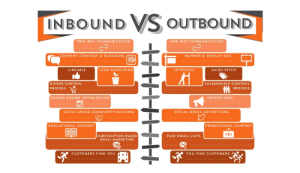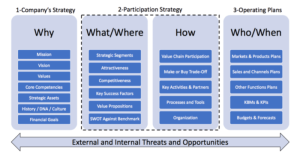
As Outbound Sales Strategy takes center stage, this opening passage beckons readers with casual formal language style into a world crafted with good knowledge, ensuring a reading experience that is both absorbing and distinctly original.
In the realm of sales, mastering the art of Outbound Sales Strategy can be the key to unlocking success and reaching new heights in business growth.
Outbound Sales Strategy

Outbound Sales Strategy is a proactive approach to sales where sales representatives reach out to potential customers to generate leads and close deals. It involves initiating contact with prospects through cold calling, emails, or networking events. This strategy is crucial for businesses to expand their customer base and increase revenue.
Key Components of an Effective Outbound Sales Strategy
- Target Audience Identification: Defining the ideal customer profile and targeting specific industries or demographics.
- Personalized Outreach: Tailoring messages to address the needs and pain points of individual prospects.
- Multichannel Approach: Utilizing various communication channels such as phone calls, emails, and social media to engage with prospects.
- Follow-Up and Persistence: Consistent follow-up to nurture leads and keep the conversation going.
- Data-Driven Decision Making: Analyzing metrics and feedback to optimize the sales process and improve performance.
Outbound vs. Inbound Sales Strategy
Inbound Sales Strategy focuses on attracting leads through content marketing, , and social media, where prospects come to the business. On the other hand, Outbound Sales Strategy involves reaching out to potential customers actively. While inbound generates warmer leads, outbound allows for more control over lead generation and outreach.
Examples of Successful Outbound Sales Strategies
- Amazon’s personalized email campaigns targeting customers based on their previous purchases and browsing history.
- Salesforce’s proactive outreach through phone calls and emails to engage with potential clients and offer tailored solutions.
- HubSpot’s multichannel approach combining social media, email, and events to reach a wider audience and drive sales.
Sales Training

Sales training plays a crucial role in developing an effective sales team. It equips sales professionals with the necessary skills, knowledge, and techniques to engage with customers, overcome objections, and close deals successfully. Continuous training ensures that sales reps stay updated on industry trends, product knowledge, and sales strategies, enabling them to perform at their best.
Types of Sales Training Methods
- Role-playing: By simulating real-life sales scenarios, role-playing helps sales reps practice their pitch, objection handling, and closing techniques in a safe environment.
- Workshops: Interactive workshops provide hands-on training, group discussions, and feedback sessions to enhance sales skills and promote collaboration among team members.
- Online Courses: Virtual training programs offer flexibility and accessibility for sales reps to learn at their own pace, focusing on specific areas of improvement.
Role of Ongoing Sales Training
Ongoing sales training is essential for improving sales performance and achieving targets. It ensures that sales reps are equipped with the latest tools and techniques to adapt to changing market conditions, customer needs, and competitive landscapes. Continuous learning and skill development empower sales teams to stay ahead of the curve and drive consistent results.
Best Practices for Designing and Implementing a Successful Sales Training Program
- Identify Training Needs: Conduct assessments to determine the specific skills and knowledge gaps within the sales team.
- Customize Training: Tailor the training program to address the unique needs and challenges of your sales team.
- Provide Hands-on Experience: Incorporate practical exercises, case studies, and real-world scenarios to reinforce learning.
- Offer Continuous Support: Provide resources, coaching, and feedback to help sales reps apply their training in real sales situations.
- Evaluate and Adjust: Regularly assess the effectiveness of the training program and make adjustments based on feedback and performance metrics.
Sales Strategy
Sales strategy is the overarching plan or approach that a company uses to sell its products or services. It involves setting goals, identifying target markets, and determining the best way to reach potential customers.
Differentiation between Sales Strategy and Sales Tactics
Sales strategy focuses on long-term planning and the overall direction of the sales process, while sales tactics are the specific actions taken to achieve the goals Artikeld in the strategy.
Various Sales Strategies
There are several sales strategies commonly used in the industry:
- Consultative Selling: This approach involves building relationships with customers, understanding their needs, and providing tailored solutions.
- Solution Selling: This strategy focuses on selling a specific solution to meet a customer’s problem or need.
- Relationship Selling: This method emphasizes building strong, long-term relationships with customers to drive sales and loyalty.
Aligning Sales Strategy with Business Goals
It is crucial to align the sales strategy with the overall business goals to ensure that the sales efforts contribute to the company’s success. This involves understanding the company’s objectives and tailoring the sales approach to support those goals.
Impact of Technology and Data Analytics
Technology and data analytics have revolutionized modern sales strategies by providing valuable insights into customer behavior, preferences, and trends. Sales teams can leverage technology to streamline processes, personalize interactions, and make data-driven decisions to improve sales performance.
In conclusion, Outbound Sales Strategy stands as a vital pillar in the realm of sales, offering a roadmap to success through targeted techniques and strategic approaches. Embracing this strategy can pave the way for enhanced sales performance and sustainable business growth.
Commonly Asked Questions
What makes Outbound Sales Strategy different from Inbound Sales Strategy?
Outbound Sales Strategy involves reaching out to potential customers, while Inbound Sales Strategy focuses on attracting customers through content and marketing efforts.
How can businesses align their sales strategy with overall business goals?
Businesses can align their sales strategy with overall goals by understanding their target market, setting clear objectives, and regularly evaluating performance metrics.
What are some examples of successful Outbound Sales Strategies used in different industries?
Successful Outbound Sales Strategies include personalized cold calling campaigns, targeted email outreach, and strategic networking initiatives.





